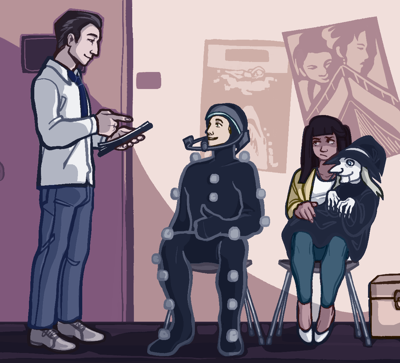The film industry’s shift toward computer-generated imagery (CGI) has transformed cinema, allowing filmmakers to create whatever they want without the restrictions of practical effects. However, excessive reliance on CGI may detract from a movie's realism.
The first time I watched Christopher Nolan’s “Inception,” I was in awe of its incredibly realistic scenes. This authenticity was mostly thanks to Nolan’s devotion to practical effects, from the very real explosions to the rotating hallway, only using CGI when necessary.
CGI was a groundbreaking tool when it was first introduced in the 1950s, and it still is. It utilizes computer software to create visual images or effects. CGI allows filmmakers to create highly realistic scenes when practical effects — the kind that aren’t made with computers — are not as convenient. We get to see things that can’t normally be recreated by hand, like distant lands that don’t exist via “Avatar” and the half-human half-cyborg seen in “Ex Machina.”
Films look better when they use CGI with a light hand, as it can enhance the storytelling without overpowering it. However, as technology advanced, so did the reliance on computer-generated imagery, where visual effects precede the narrative.
People want to get lost in the world of a movie. An excess in CGI is often noticeable, and sometimes it's so obvious that it pulls me right out of the story.
I watched “Doctor Strange in the Multiverse of Madness” when it first hit the theaters, only to find the CGI so overwhelming that it distracted me from the plot. In fact, I don’t even remember what the movie was about. All I can recall is staring at the out-of-place, computer-generated villain Gargantos and the final shot showing Dr. Strange with a third, creepy eye. The lack of realism broke my immersion, making it impossible for me to invest in the story. CGI should only ever add to the plot, not detract from it.
The over-reliance on digital effects not only impacts the viewer’s experience but also takes away from the traditional techniques in filmmaking. CGI can be more cost-effective than practical effects, costuming and makeup, mostly because traditional artists are more unionized than CGI artists. The cost difference often pushes filmmakers to opt for digital imagery.
Additionally, smaller filmmakers might not have the same budget as Nolan to create their own explosions or build sets that defy gravity. So, the use of CGI over practical effects is more understandable in that context.
There is still a certain weight to traditional filmmaking techniques. Set building, model making and animatronics bring a level of authenticity that CGI struggles to replicate. Practical effects provide actors with real environments and objects to interact with, which leads to more natural performances.
In “Guardians of the Galaxy,” director James Gunn utilized handbuilt sets whenever possible, although there were certain settings that were enhanced with CGI. This approach by the Marvel franchise creates a realism that is often missing in recent Marvel Studios productions. The actors didn’t look out of place because they were mostly working in the same setting we see in the movie; they weren’t always in front of a green screen wearing motion-capture suits.
This isn’t to say CGI is bad, but balancing practical with computer-generated effects can create a more compelling and visually interesting movie-going experience. Movies that can achieve this balance often become the ones people remember the most.
In “Jurassic Park,” for example, CGI was used to add texture to the animatronic dinosaurs we see on screen. “Jurassic Park” earned three Academy Awards for its visual effects alone. Movies like this were innovative because they mixed computer images with practical effects so well that there was hardly a noticeable difference.
Filmmakers can enhance their storytelling by viewing CGI as a tool among others, not as the sole solution to visual challenges.
A film’s realism depends on its ability to suspend disbelief. Practical effects lend authenticity that CGI can’t capture, and digital effects expand on what can’t be recreated by hand. When they are used together, they enhance the realism of a film, allowing viewers to fully engage themselves in the story regardless of how surreal the plot may be.
When filmmakers balance their tools wisely, they can create incredibly immersive experiences that illustrate the narrative rather than overshadow it. This balance not only respects traditional filmmaking techniques and their artists but also takes advantage of modern technology to enhance storytelling,
As the world of film continues to evolve, maintaining the harmony between CGI and practical effects will be the key to producing more films that captivate audiences, as movies have done in the past.






(0) comments
Welcome to the discussion.
Log In
Keep it Clean. Please avoid obscene, vulgar, lewd, racist or sexually-oriented language.
PLEASE TURN OFF YOUR CAPS LOCK.
Don't Threaten. Threats of harming another person will not be tolerated.
Be Truthful. Don't knowingly lie about anyone or anything.
Be Nice. No racism, sexism or any sort of -ism that is degrading to another person.
Be Proactive. Use the 'Report' link on each comment to let us know of abusive posts.
Share with Us. We'd love to hear eyewitness accounts, the history behind an article.